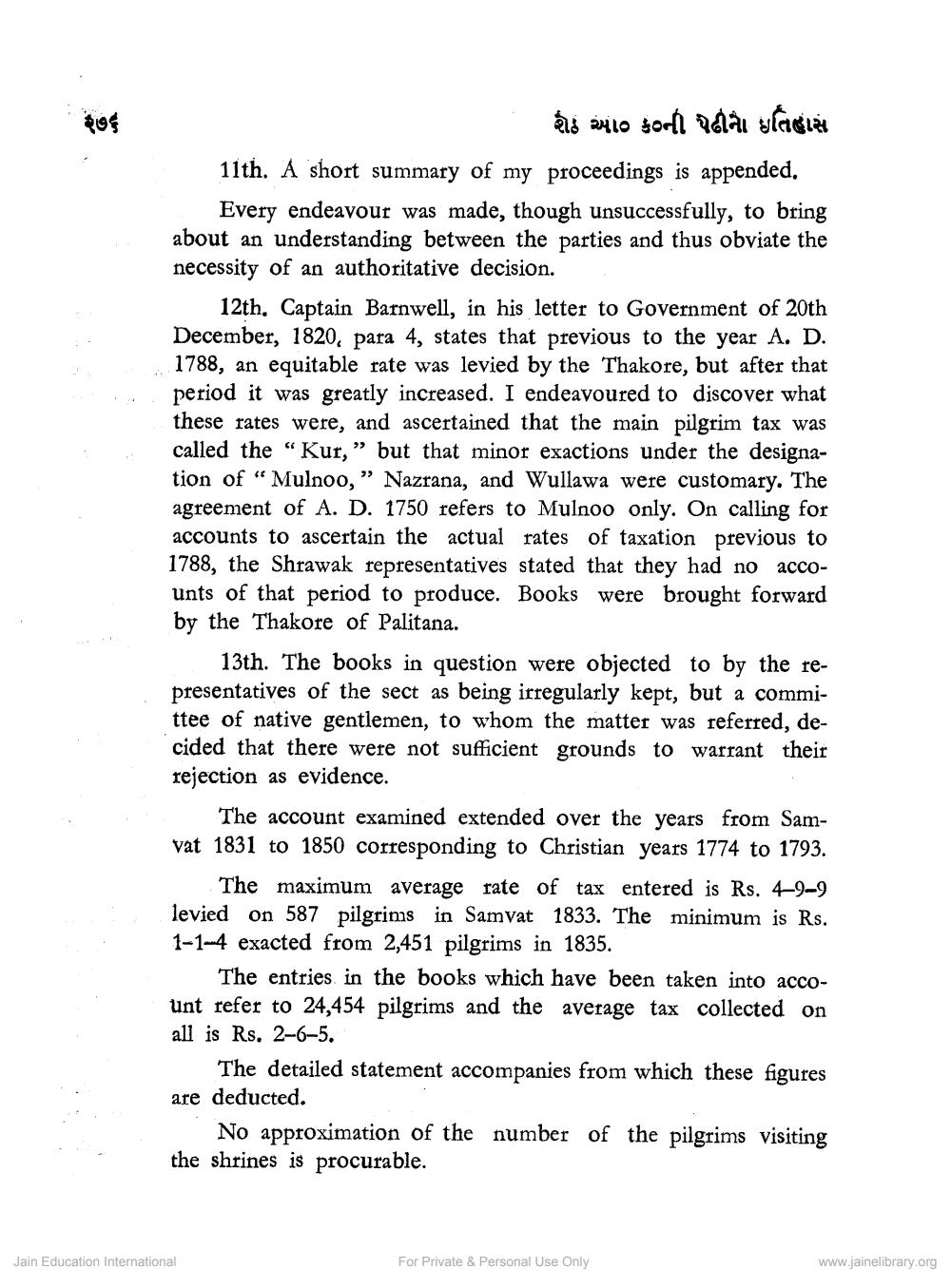________________
20$
શેઠ આઠ કેવની પેઢીને ઇતિહાસ 11th. A short summary of my proceedings is appended.
Every endeavour was made, though unsuccessfully, to bring about an understanding between the parties and thus obviate the necessity of an authoritative decision.
12th, Captain Barnwell, in his letter to Government of 20th December, 1820, para 4, states that previous to the year A. D. 1788, an equitable rate was levied by the Thakore, but after that period it was greatly increased. I endeavoured to discover what these rates were, and ascertained that the main pilgrim tax was called the “Kur,” but that minor exactions under the designation of " Mulnoo,” Nazrana, and Wullawa were customary. The agreement of A. D. 1750 refers to Mulnoo Only. On calling for accounts to ascertain the actual rates of taxation previous to 1788, the Shrawak representatives stated that they had no accounts of that period to produce. Books were brought forward by the Thakore of Palitana.
13th. The books in question were objected to by the representatives of the sect as being irregularly kept, but a committee of native gentlemen, to whom the matter was referred. de cided that there were not sufficient grounds to warrant their rejection as evidence.
The account examined extended over the years from Samvat 1831 to 1850 corresponding to Christian years 1774 to 1793.
The maximum average rate of tax entered is Rs. 4–9-9 levied on 587 pilgrims in Samvat 1833. The minimum is Rs. 1-1-4 exacted from 2,451 pilgrims in 1835.
The entries in the books which have been taken into account refer to 24,454 pilgrims and the average tax collected on all is Rs. 2-6-5.
The detailed statement accompanies from which these figures are deducted.
No approximation of the number of the pilgrims visiting the shrines is procurable.
Jain Education International
For Private & Personal Use Only
www.jainelibrary.org




